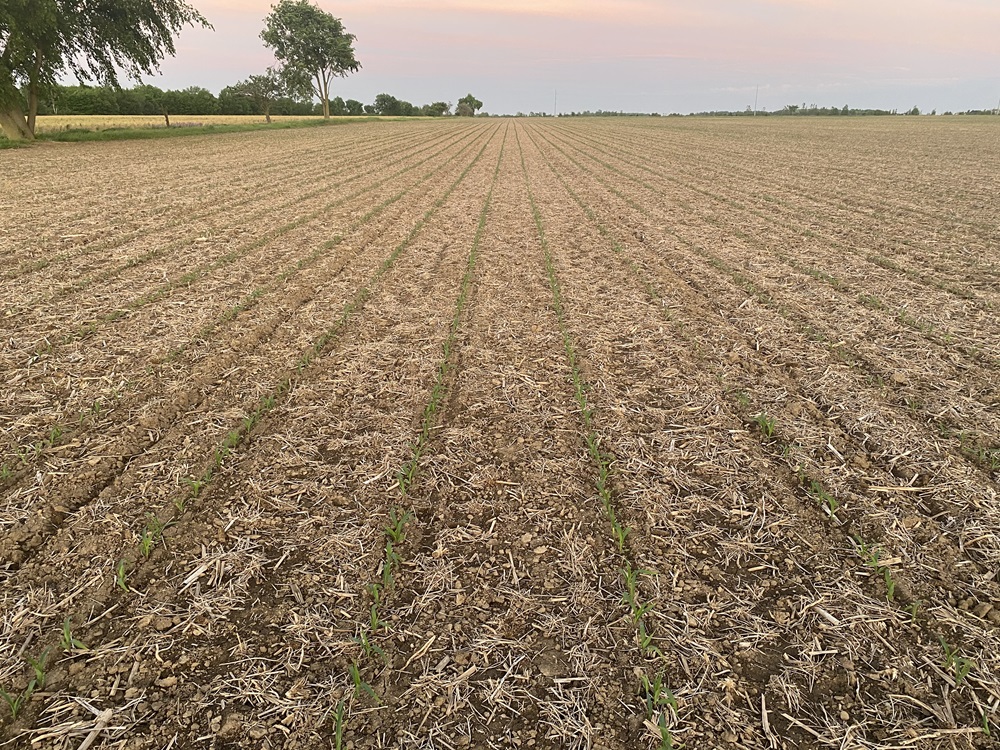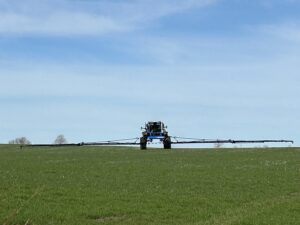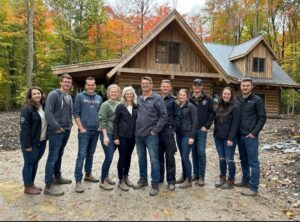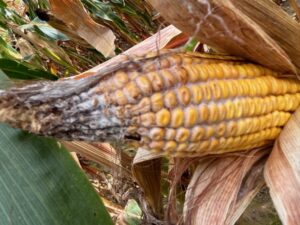Quantifying GHG emissions
DRIVERS, APPROACHES, AND FARM INSIGHTS

AGRICULTURAL PRODUCTION IS A SOURCE AND SINK OF GREENHOUSE GAS (GHG) EMISSIONS. Determining if a farm, region, or even a country’s agricultural sector is a net source or sink of GHG emissions requires data collection and analysis of a combination of factors, including local climatic conditions, soil type, production systems, and adoption rates of management practices such as tillage and irrigation.
Taking stock of the pluses and minuses in GHG emissions and trends over time is critical and, in some cases, a required action across economic sectors, including transportation, waste, and agriculture. Quantifying GHG emissions from agricultural production is increasingly becoming a common practice among food and agriculture companies, governments, investors and banks, and farmers. The reasons for quantifying GHG emissions and carbon sequestration in agriculture are diverse and growing, including:
- Improve supply chain traceability
- Track progress against climate and nature targets
- Identify areas of progress and hotspots to inform decision-making and investments
- Demonstrate to stakeholders along supply chains and in policy development that the agriculture sector is taking action to better understand and mitigate impacts on climate change and nature
- Make credible claims about the sustainability of commodities and products (e.g., carbon footprinting)
- Develop new revenue streams through market-based mechanisms
Amadou Thiam, engineering specialist at the Ontario Ministry of Agriculture, Food and Rural Affairs (OMAFRA), says that “quantifying GHG emissions can be a useful exercise for farmers to develop a baseline, as areas of progress and hotspots are not always what we may assume.” Thiam shares that grain farmers in Ontario are doing a lot of great things when it comes to mitigating GHG emissions. The key areas that grain farmers may need to focus on for their GHG emissions are fertilizer application and fuel use.
| QUANTIFICATION TYPE | DESCRIPTION QUANTIFICATION APPROACHES | EXAMPLE OF FARM-LEVEL ROLE IN QUANTIFICATION |
|---|---|---|
| DIRECT MEASUREMENT | Measurement-based approaches: Soil sampling and using static chamber-based methods to quantify the impacts of practices and production systems on soil carbon and GHGs. | Physically taking measurements in the field and sending samples to a lab for analysis. Note: Some direct measurement tools, such as chamber-based methods, are generally only suitable in research settings due to equipment costs and expertise requirements. |
| INDIRECT MEASUREMENT | Activity-based calculation approaches: Methods that multiply activity data that describes an on-farm practice (e.g., manure application) by a coefficient that was developed through research trials to characterize the estimated GHG impact of the respective activity (e.g., 1% of N application is released as N2O emissions). | Participating in surveys that collect information on practice and technology adoption. Note: This approach can be used to develop carbon intensity scores of crop production. |
| Model-based calculation approaches: Methods that use mathematical modelling to estimate GHG emissions using input variables (e.g., tillage practices) and fixed parameters (e.g., soil type) adapted to the regional and production system context. | Using model-based tools to estimate on-farm emissions and participating in surveys and research that collect information on practice and technology adoption. Note: This approach also relies on activity data and research to improve model calibration. |
QUANTIFYING ON-FARM GHG EMISSIONS AND CARBON SEQUESTRATION
There are direct and indirect methods to quantify GHG emissions and soil carbon on farms. Direct measurements include soil sampling and using static chamber-based methods to quantify the impacts of practices and production systems on soil carbon and GHG emissions on site. Indirect measurement approaches are primarily calculation-based but are informed by direct measurement approaches to ensure that the calculations closely represent actual observations.
Indirect and direct approaches depend on each other to provide assurance to estimates, improve accuracy, and scale our ability to quantify GHG emissions. When asked about approaches to building an accurate representation of GHG emissions and carbon sequestration in agriculture, Dr. Roland Kröbel, ecosystem modeller at Agriculture and Agri-Food Canada (AAFC), emphasizes that two key activities need to be advanced. The first is scaling research efforts that support our understanding of practices and their impacts on GHG sources and sinks. For example, identify the nitrous oxide emissions from adopting a split nitrogen application approach. The second is ensuring the scope and approaches to data collection (e.g., surveys) evolve to effectively capture the adoption rate of innovative on-farm practices and technologies contributing to climate change mitigation.
Dr. Nathan Pelletier, associate professor at the University of British Columbia, shares that “producing estimates is a pretty data- intensive exercise, but the information required is stuff that most farmers already have a really good handle on.” The key factors Pelletier’s research team relies on to estimate the carbon intensity of crop production, which primarily uses an activity- based calculation approach, include “the kinds and amounts of fertilizers and crop protection products that are used, seeding rates and yields, and machinery use (types and numbers of passes for things like tillage, fertilizing, spraying, harvesting, etc.). We combine this information with soil and climate data based on the farm’s location, models for estimating emissions from soil and fertilizers as well as changes in soil organic carbon, and models of “upstream” activities to produce things like fertilizer and fuels to estimate overall all emissions. This allows creating a quite accurate mapping of all the sources of emissions and their relative magnitudes.”
LEARN MORE ABOUT GHG EMISSIONS AND CARBON SEQUESTRATION ON YOUR FARM
Free tools are available for farmers, including the Holos model and the GHG tool in Agrisuite, which are model-based approaches intended for education and awareness. Thiam emphasizes that “farmers should be aware that every tool has limitations and that they are producing estimates.” Before developing an estimate, Thiam notes that “it is important for farmers to determine the boundary and time scale of what they want to quantify and why they want to quantify GHG emissions,” as the intention behind estimating can influence the approach that is taken (e.g., model-based vs. activity- based approaches).
HOLOS MODEL: AAFC developed the Holos model to enable users to model scenarios that reflect real farming systems and make adjustments to see how practice changes impact GHG emissions and changes in soil carbon. Kröbel shared that “the Holos model is a stand-alone desktop model, which means that those who use it have control over the data they’ve inputted and the estimates produced.” www.agriculture.canada.ca/en/agricultural-production/holos
AGRISUITE: OMAFRA has developed a GHG tool within AgriSuite to support farmers in estimating on-farm GHG emissions and soil carbon sequestration. www.agrisuite.omafra.gov.on.ca
After developing an estimate of GHG emissions using these tools, farmers can run through ‘what if’ scenarios of practices that could be adopted on their farms to reduce GHG emissions. Thiam shares that “farmers should consider if modifications to practices or new practice adoption will create co-benefits that the farmer values, such as less expenditure or improved soil health, what the costs and net returns are both short- and long-term, and if the practice results in net GHG emissions reductions.”
By quantifying on-farm GHG emissions and soil carbon, farmers can broaden their awareness of their business’ progress and opportunities to advance, complementing their existing efforts to compile farm management information to make informed decisions.
Lisa Ashton, PhD, is Grain Farmers of Ontario’s sustainability and environment lead. •












